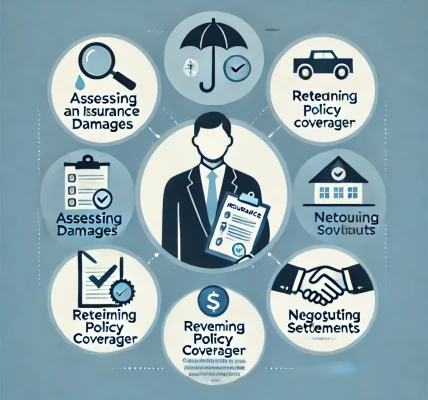Filing an insurance claim can be a daunting process, especially if you’re handling it without legal representation. However, many policyholders successfully file claims on their own, saving time and money. Whether it’s a car accident, property damage, or a medical claim, knowing how to navigate the process can ensure you receive a fair settlement.
In this guide, we’ll walk you through the steps to file an insurance claim on your own while avoiding common mistakes.
Step 1: Understand Your Insurance Policy
Before filing a claim, thoroughly review your insurance policy to understand:
- Coverage limits – Know what is covered and the maximum amount your insurer will pay.
- Deductibles – Determine how much you need to pay out of pocket before insurance kicks in.
- Exclusions – Identify any situations that are not covered by your policy.
- Claim deadlines – Each insurance policy has a specific time frame within which you must file a claim.
Understanding your policy helps you set realistic expectations and prepares you for negotiations with the insurance company.
Step 2: Gather Necessary Documentation
Strong documentation is crucial for a successful claim. Be sure to collect:
- Photographic evidence – Take clear pictures of the damage, injuries, or accident scene.
- Police reports – If applicable, obtain an official police report for verification.
- Medical records and bills – For health or accident-related claims, keep all medical documents and receipts.
- Witness statements – If there were witnesses, get their statements and contact information.
- Repair estimates – For property or auto claims, secure multiple repair estimates to substantiate your claim amount.
Step 3: Notify Your Insurance Company
Most insurance policies require prompt notification of an incident. Contact your insurer and provide:
- Your policy number
- Date and location of the incident
- Description of what happened
- Any injuries or damages involved
Ask about the next steps and what additional information they require.
Step 4: Complete and Submit the Claim Form
Your insurer will provide a claim form that you must fill out accurately. Avoid vague descriptions—be as detailed as possible. Include:
- A summary of the event
- A list of damages or injuries
- Estimated costs (if applicable)
- Supporting documents (photos, bills, reports, etc.)
Ensure all information is correct before submission to prevent delays or denials.
Step 5: Cooperate with the Insurance Adjuster
After submitting your claim, an insurance adjuster will assess the situation. Their job is to:
- Investigate the claim’s validity
- Determine the extent of coverage
- Propose a settlement amount
Tips for Dealing with Adjusters:
- Be honest but cautious in your communication.
- Do not admit fault or exaggerate damages.
- Provide requested documents promptly.
- Take notes of all conversations, including date, time, and names.
- Ask for a written explanation if your claim is reduced or denied.
Step 6: Negotiate a Fair Settlement
Insurance companies often start with a lower settlement offer. You have the right to negotiate.
Negotiation Strategies:
- Compare the offer with repair estimates or medical bills.
- Highlight strong evidence that supports your claim.
- Request a breakdown of how the insurer calculated the settlement.
- Remain polite but firm in your discussions.
If necessary, submit a counteroffer with justifications.
Step 7: Follow Up and Finalize the Claim
Persistence is key. Follow up regularly to check on your claim’s status. If you reach an agreement:
- Get the settlement details in writing.
- Review the terms before signing any agreements.
- Ensure you receive the payment within the agreed timeframe.
When to Consider Legal Help
While most claims can be handled independently, some situations may require legal advice:
- If your claim is wrongfully denied.
- If the insurance company acts in bad faith (delays, unfair settlements, etc.).
- If you are facing a complex or high-value claim.
- If the insurer refuses to negotiate.
If needed, consult a public insurance adjuster or attorney specializing in insurance claims.
Final Thoughts
Filing an insurance claim without a lawyer is entirely possible if you understand your policy, provide strong documentation, and effectively negotiate your settlement. Stay organized, be patient, and advocate for a fair outcome. By following these steps, you can maximize your payout without the expense of hiring legal representation.
Would you like more guidance or specific templates for claim letters? Let us know in the comments!


